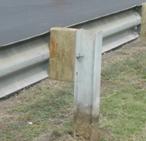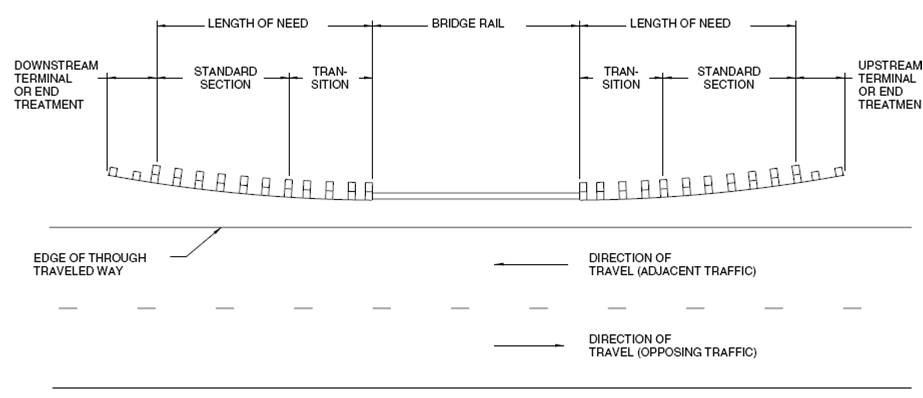I. INTRODUCTION: INTENT AND CONTENT
Ideally, highways should be designed so there is no need for roadside barriers; unfortunately, this is seldom practical. Bridge piers, steep side slopes, non-breakaway sign or luminaire (street light) posts, or other similar features along the road create potential dangers to drivers who leave the roadway. Because barriers themselves are potential hazards, use them only when necessary to shield a condition that could be significantly more hazardous. For example, crews may be able to modify a non-traversable, potentially dangerous drainage inlet to be safely traversable, making installation of a barrier unnecessary. Should the potential hazard be a steep embankment, a bridge pier, or a large sign support, installing a barrier may be the best option for preventing serious injury or fatality.
Deciding whether to install barrier can be a complex decision. Guidance on when and where to install a barrier can be found in the Roadside Design Guide (see reference list). However, once a barrier is installed, road crews must maintain it and repair it to ensure it functions as intended.

Strong post W-beam guardrail with wood block and metal post.
This guide focuses on how to repair (not design) the most widely used barrier–the strong post W-beam guardrail identified as SGR-04 in the Standardized Highway Barrier Hardware Guide. (The term guardrail, and in some states guiderail, is commonly used either for just W-beam barriers or for barriers in general; for future use in this guide, the term W-beam guardrail will refer to the strong post W-beam barrier system.) The standard strong post W-beam guardrail consists of a W-beam rail element and strong posts (wood or steel) spaced at 6 ft3 in with the rail blocked out from the posts. Although the focus is the strong post system, much of the guidance that is provided for the repair of the strong post design can apply to the weak post design as well.
This guide is structured around the three sections of a guardrail that have variations in design to serve their purposes:
- Standard section-the main section that shields the obstacle.
- Transition section-which applies when the guardrail ties into a bridge rail or other barrier system.
- Terminal(or End Treatment) section-the initialsection at the upstream (beginning) and downstream (end).

Standard sections of roadside barriers.
(Source: Roadside Design Guide)
The next chapter identifies three levels of damage resulting from impacts into each section and suggests corrective action. Chapter III provides basic guidance on repair sequence and Chapter IV discusses record keeping. Appendix A addresses estimating parts and materials and identifying resources (work crews and equipment) needed for typical repair work and includes two examples of damage inspection reports and a tool for estimating the radius of curved guardrail elements. Appendix B provides one State's guardrail repair guidelines. Although this guide is for guardrail repair, Appendix C provides guidance for maintenance activities that improve the likelihood that barriers of all types will perform as intended. Finally, Appendix D provides a description of the clear zone, an important safety feature for all roads. References are found after Chapter IV.
